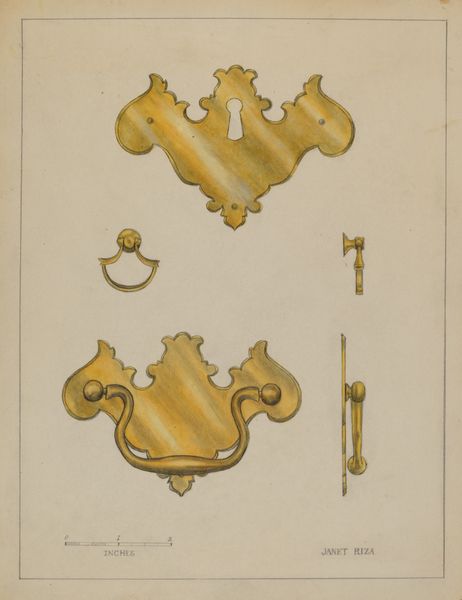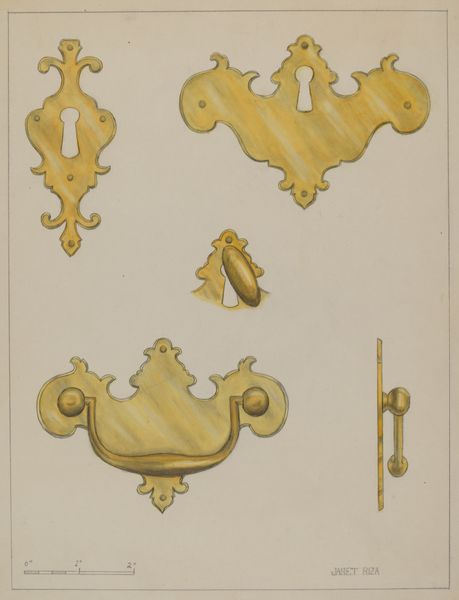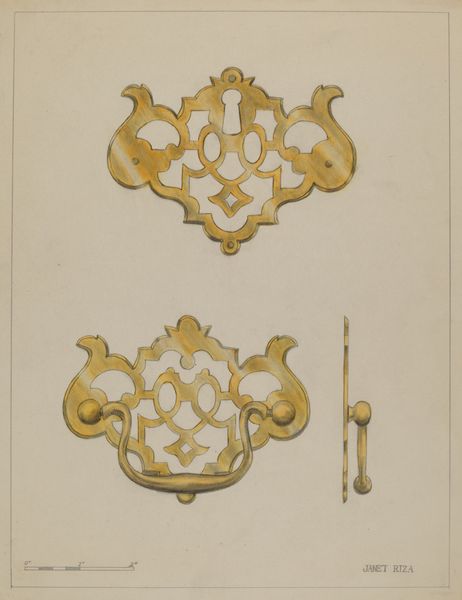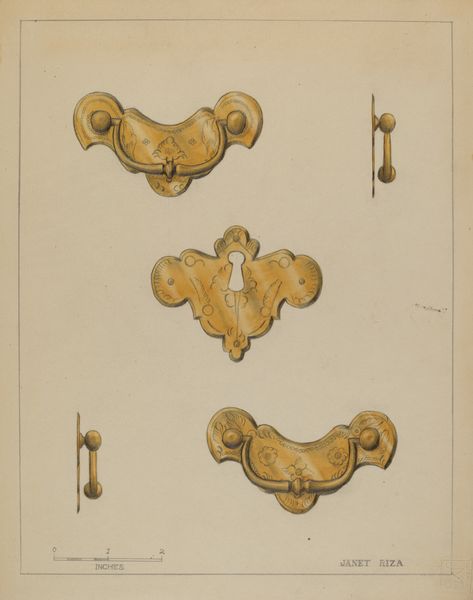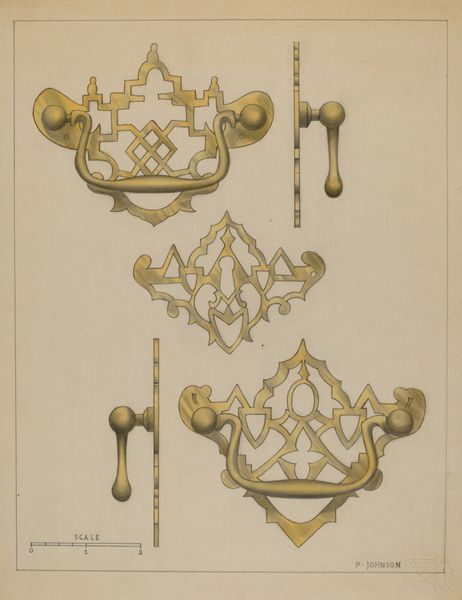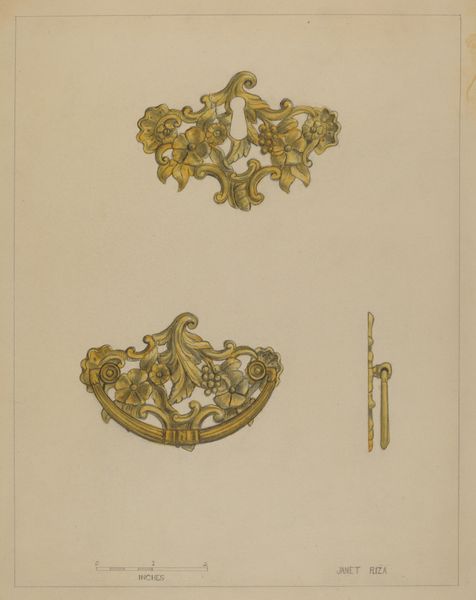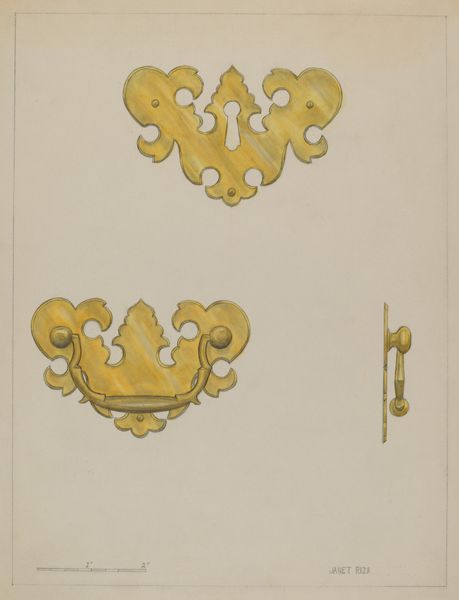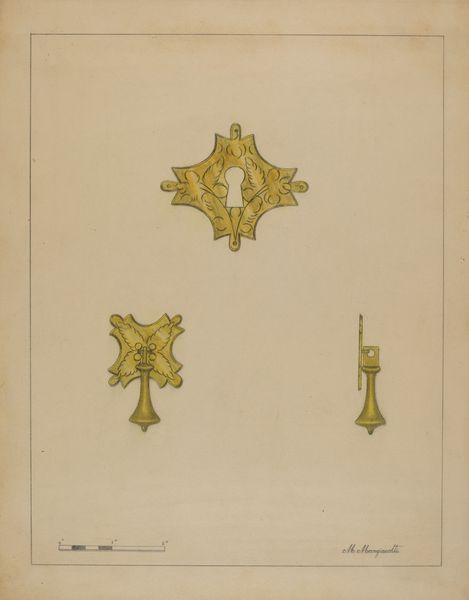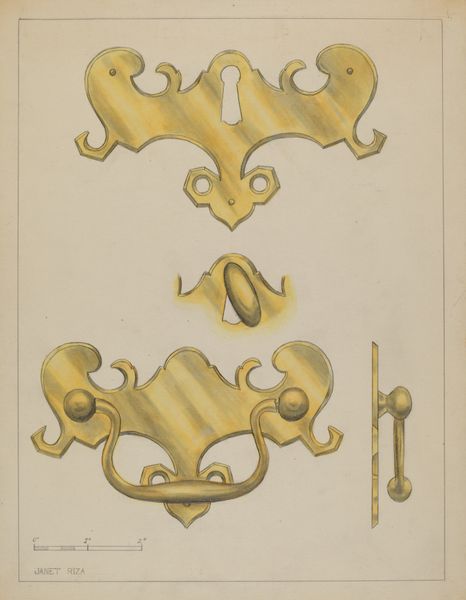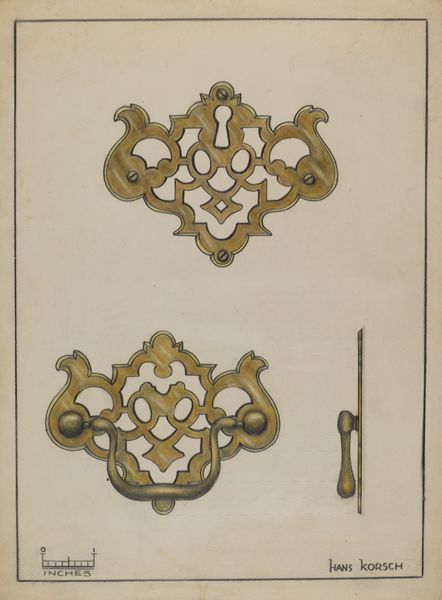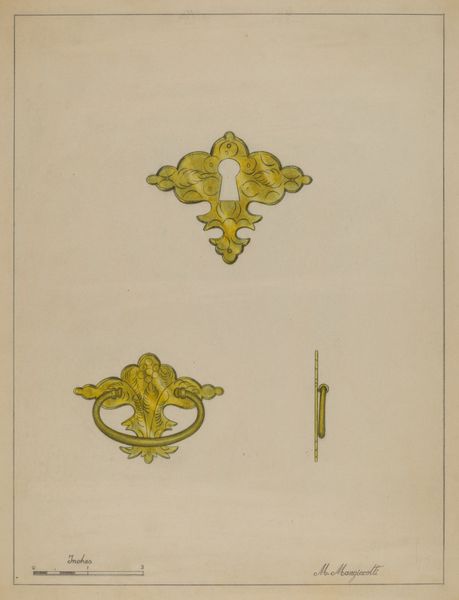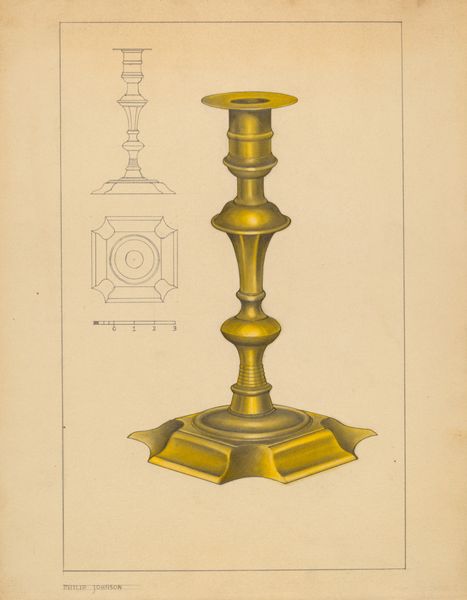
drawing, watercolor
#
drawing
#
watercolor
#
decorative-art
#
watercolor
Dimensions: overall: 29.4 x 22.7 cm (11 9/16 x 8 15/16 in.)
Copyright: National Gallery of Art: CC0 1.0
Editor: Well, look at this delightful drawing! It's Philip Johnson's "Drawer Pull," dating from about 1936, rendered in watercolor. What strikes you first? Curator: Its elegance, certainly. The symmetry is immediately apparent. The composition divides itself neatly into thirds, offering variations of the same theme. It reminds one of architectural elevation drawings. Editor: Indeed. Note the precision of the watercolor technique. It allows for capturing light reflecting off the brass. Were these mass produced? Was Johnson considering craft, or seriality, here? The rendering celebrates industrial possibility. Curator: From a design perspective, consider the inherent tension between function and embellishment. The pull itself must, first and foremost, allow one to open the drawer. But Johnson complicates its basic utilitarian nature. Editor: By evoking craft traditions perhaps? The almost cloud-like outline around the solid central mass gives it lightness, delicacy, countering its heaviness in practical terms. And what could one put inside this drawer? Papers? Linens? The handle offers more than just access, it is a lure. Curator: True. There's a kind of playful visual paradox occurring. We’re grounded in the material reality of brass but also transported by the whimsical aesthetic, this is a critical interplay in Johnson’s work, regardless of scale or intention. Editor: It prompts us to consider the larger domestic narrative in which this object participates, how a utilitarian piece can shape or reshape labor and domestic activity within the household. We shouldn’t forget the workers who cast these forms in metal either, likely by hand at this period. Curator: It demonstrates the transformative power of design—to elevate an otherwise ordinary object to a level of sophistication and visual intrigue. Its value stems from a nuanced play of form. Editor: Thinking through this drawing, for me, reminds us that an apparently humble design object like this bears unseen histories and social relations of material production that must be part of any conversation about aesthetics or formal qualities. Curator: A valuable insight and a reminder for me to appreciate functional design from new angles. Editor: Agreed. I see decorative arts from a new angle myself after this conversation.
Comments
No comments
Be the first to comment and join the conversation on the ultimate creative platform.

